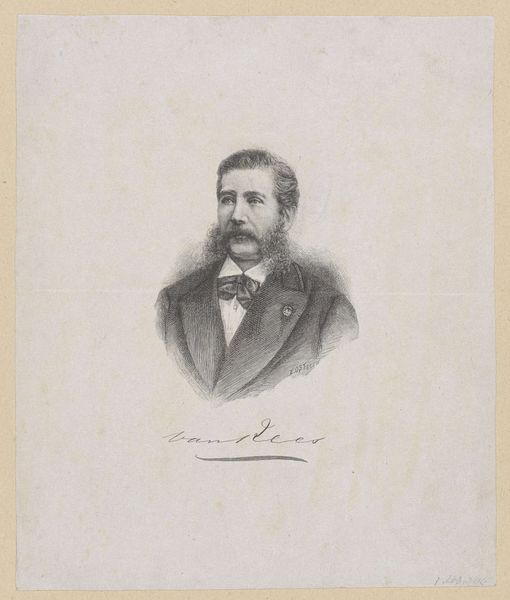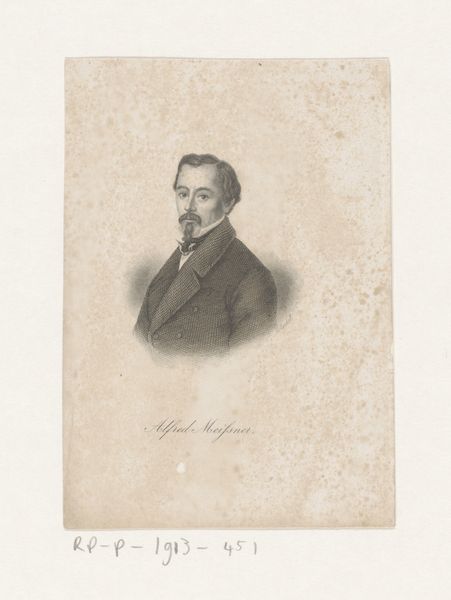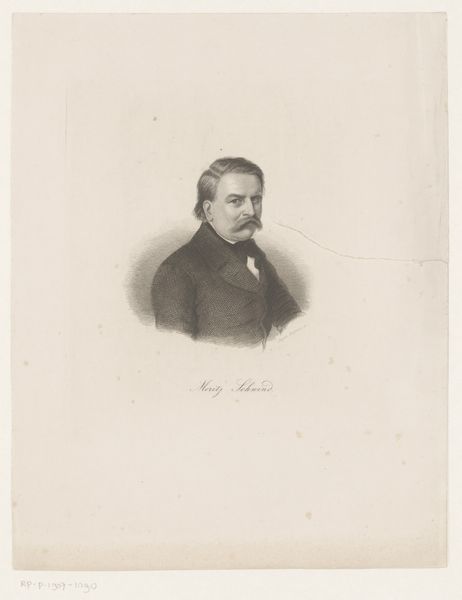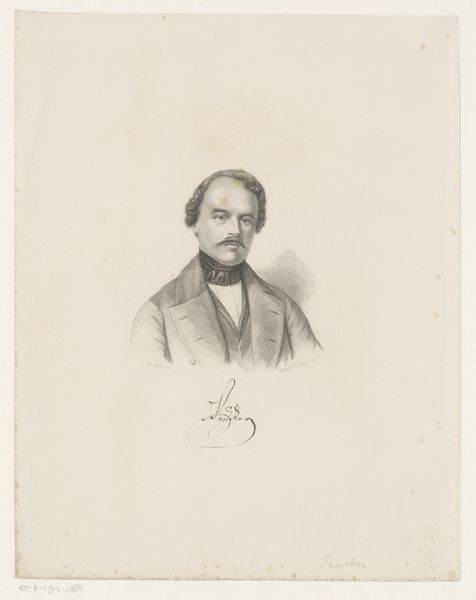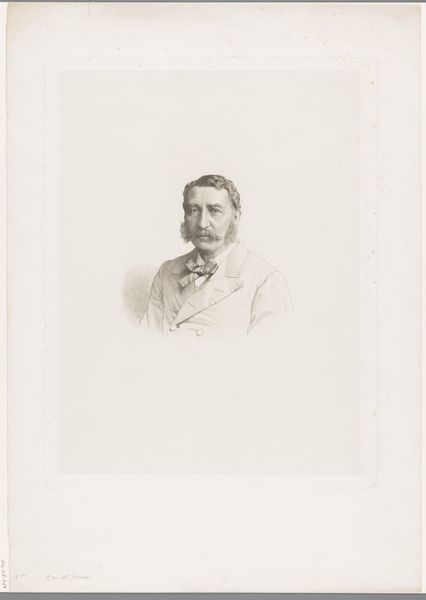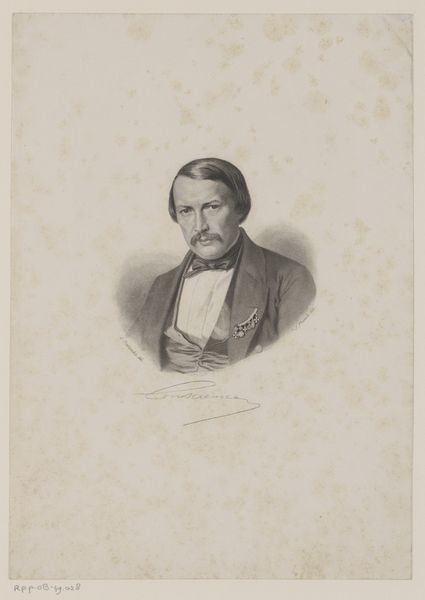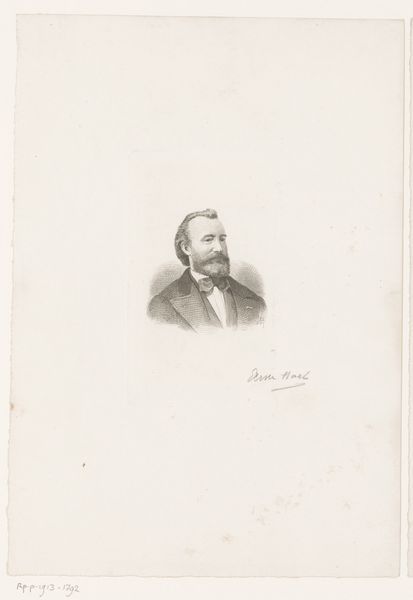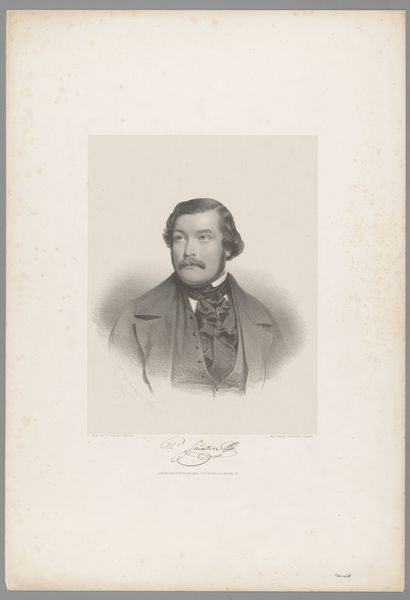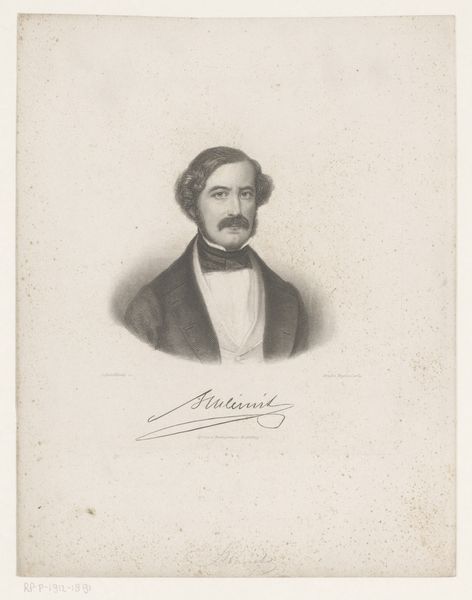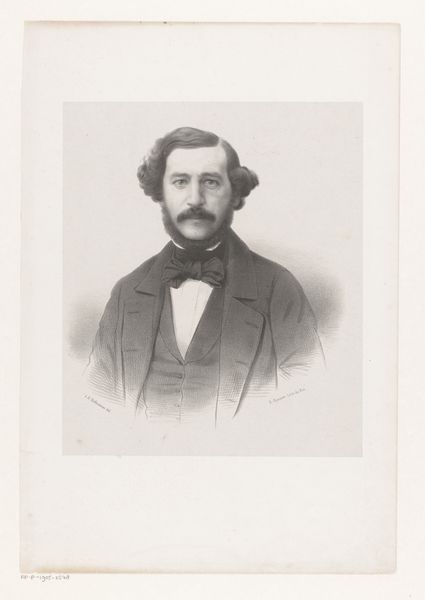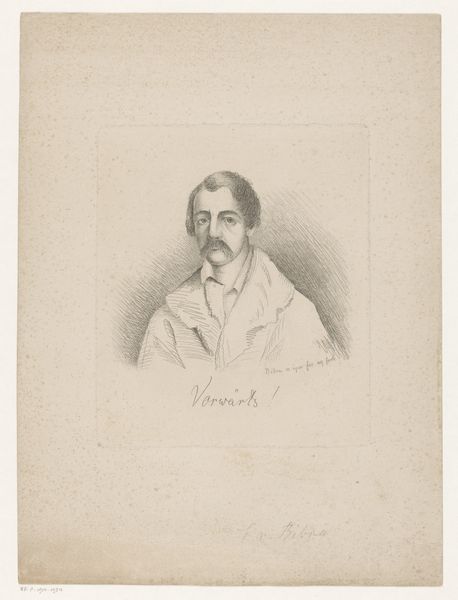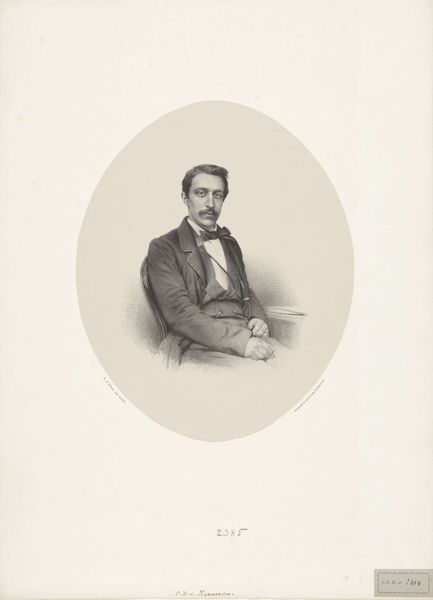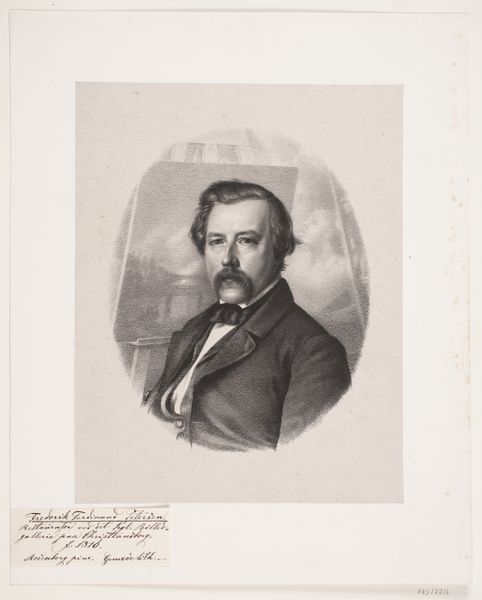
drawing, pencil
#
portrait
#
pencil drawn
#
drawing
#
pencil sketch
#
pencil drawing
#
pencil
#
portrait drawing
#
academic-art
#
realism
Dimensions: height 165 mm, width 100 mm
Copyright: Rijks Museum: Open Domain
Editor: This is Léon Brunin’s "Portret van Francis Enne," made in 1883, a pencil drawing. It feels quite formal and precise, almost like a photograph rendered by hand. How do you interpret this work? Curator: Well, beyond its clear demonstration of academic skill, the portrait provides insight into the cultural values of the late 19th century. Portraits were crucial in establishing and maintaining social status, especially for the bourgeoisie. Do you notice anything about the subject’s attire? Editor: Yes, the suit and bow tie definitely indicate a certain level of affluence and adherence to social norms. Curator: Precisely. The choice of pencil, a relatively accessible medium, also points to the increasing democratization of art, but within very prescribed visual languages of social class and propriety. Also, considering its existence as a drawing, not a painting, what statement do you think Brunin is trying to make, versus someone like Manet? Editor: Hmmm. Maybe it signals an engagement with realism, but still within the boundaries of acceptable portraiture at the time, lacking the overt political statements of someone like Courbet? Curator: That's a perceptive observation. This drawing demonstrates an attempt to capture likeness while also subtly reinforcing social structures through the visual language of the time. It reminds us that portraiture is rarely just about the individual. Editor: I hadn't really considered how the medium and style choices work together to reveal social contexts. Thank you! Curator: Indeed. It's through these layered readings that art history truly comes alive.
Comments
No comments
Be the first to comment and join the conversation on the ultimate creative platform.
